This is the second blog in our three-part series about Cisco Foundation climate grantees working in the Amazon and South America region. You can read our first blog, about how Cisco Foundation Grantees prioritize Indigenous leadership to protect the Amazon Basin. This series will introduce you to eight Cisco Foundation Climate Impact & Regeneration grantees working to support preservation and protection of the Amazon basin through three main avenues, all of which are deeply entangled and in tandem serve to promote enduring environmental protection and preservation: Prioritizing Indigenous Sovereignty, Promoting Sustainable Livelihood Opportunities, and Scaling Innovative Financing Opportunities.
This blog was constructed in partnership with my colleagues at Kara Solar: Nantu Canelos and Oliver Utne; Andes Amazon Conservancy, Rebecca Allen; Terraso, Derek Caelin; and Risaralda Model Forest, John Rodríguez.
The Amazon rainforest is a biodiverse tropical ecosystem that spans nine South American countries, is home to over 500 Indigenous groups, and contains 10% of the world’s biodiversity. Not only does the Amazon bioregion positively impact broader South America, but it supports life around the world by stabilizing global temperatures and rainfall patterns. Yet, the region is facing enormous pressure from industrial practices such as gold mining, oil drilling, and deforestation for timber and agricultural land. It is clear that urgent action is needed to protect the future of the Amazon and its surrounding ecoregions, but to navigate highly complex sociocultural and geopolitical dynamics can be a daunting task.
Fortunately, a pathway through such complexity known as ‘sustainable livelihood opportunities’ or ‘sustainable development’ is rising to the forefront of modern conservation discourse. The term emerged from the United Nations (UN) Conference on Environment and Development summit in Rio de Janeiro in 1992, often known as the “Earth Summit.” Not only did this summit establish the UN Framework Convention on Climate Change, along with several other high-impact commissions, but it prominently highlighted how environmental, social, and economic factors are deeply entangled, and can be pursued in harmony with one another on a global scale.
According to the WWF (formerly World Wildlife Fund for Nature), many of the most important strategies for protecting terrestrial ecosystems in the Amazon combine traditional conservation methods with sustainable landscape management practices. A multitude of opportunities and methods are rising to the forefront of modern discourse around South American ecosystem protection through practices like agroforestry and sustainable fishing. The key for these opportunities is to identify alternatives to destructive practices like intensive logging, and co-create participatory management with local communities.
What does this look like in practice? It’s my pleasure to introduce you to three Cisco Foundation grantees that are working to provide sustainable economic empowerment to local, often Indigenous, communities throughout the Amazon and its connected, neighboring ecosystems across South America.
Transportation sovereignty empowered by Kara Solar
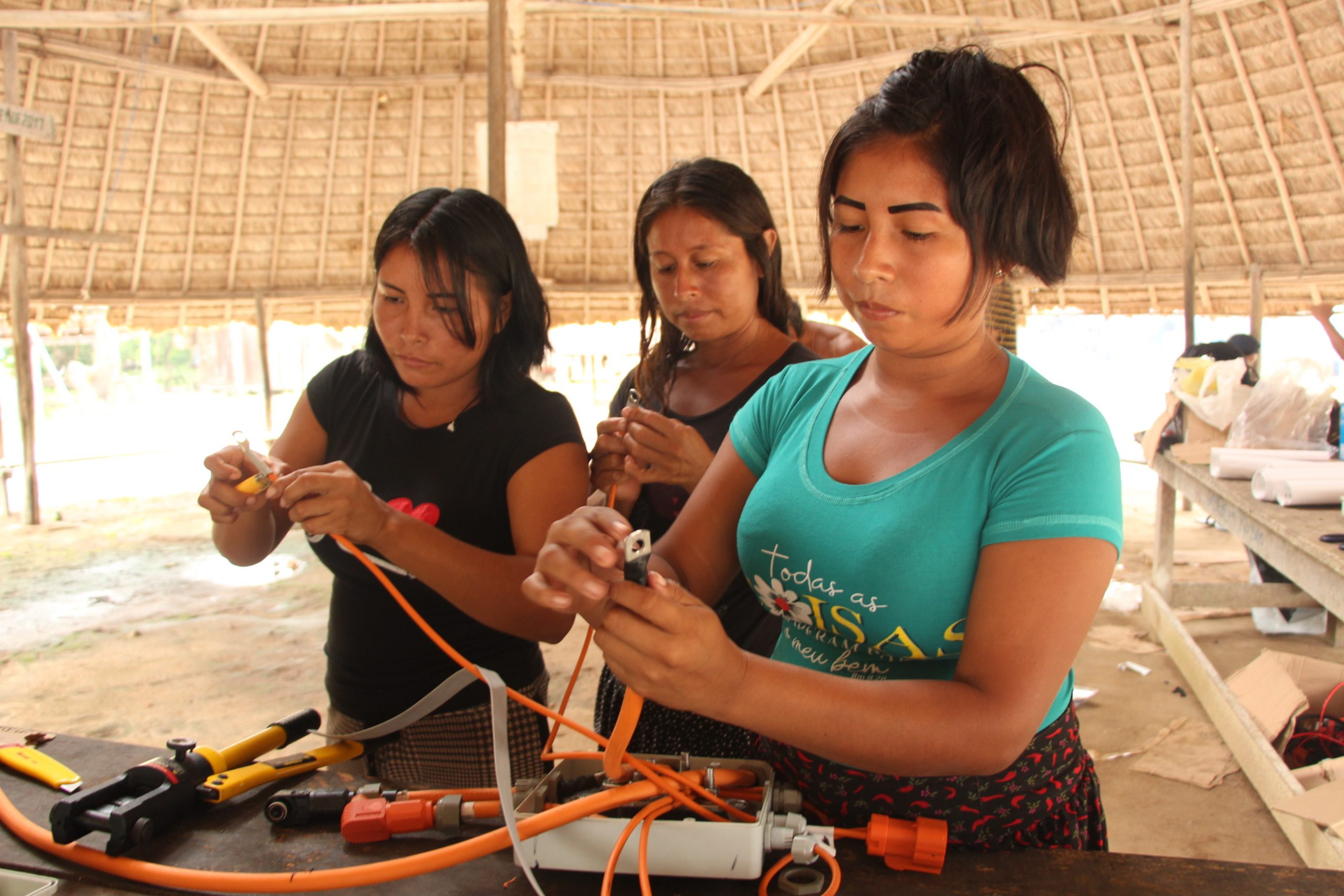
Kara Solar formed in 2018 from an alliance between the Achuar people in Ecuador, and a multi-disciplinary engineering, design, and development team, with a clear vision to empower Indigenous communities in the Amazon with solar energy.
According to Kara Solar’s Executive Director, Nantu Canelos, the “lack of access to electricity in Indigenous communities limits our ability to access technology, improve the health and well-being of our people, and develop business that economically support our communities.” Kara Solar seeks to alleviate these pressures through three interconnected approaches: solar river transport, training Indigenous electrical technicians, and localized community energy grids.
This new model of transportation provides communities with “travel and energy sovereignty,” or the ability for communities to implement and manage resilient transportation and energy systems in their own territories, on their own terms. Nantu illustrates the importance and elegance of travel sovereignty: “it improves the quality of life of Indigenous communities and helps to conserve the environment.”

To bring this to life, Kara Solar provides training programs, localized supply chains, innovative financing mechanisms, and technical implementation. They now support a fleet of 9 boats, and 3 community solar energy grids which currently serve over 3000 people. A critical part of this model is training Indigenous technicians, which ensures the capacity to address mechanical breakdowns is local and therefore more readily available, and it provides a source of income to those who have newly developed technical skills.
“Kara” is an Achuar word for a vision that becomes real. Kara Solar’s vision is clear, ambitious, and in alignment with Cisco’s priority to accelerate the transition to clean energy while supporting resiliency and capacity.
According to Nantu, “Our vision for the future is one in which Indigenous communities move independently and autonomously with solar powered river transportation and use solar energy to illuminate homes and businesses, access technology and information, improve the health and well-being of community members, protect territories, and promote sustainable development. We are working to protect Indigenous culture and ensure that future generations are able to use technology to create new solutions that benefit the environment and humanity. We seek the protection of forests for the well-being of humanity.”
Andes Amazon Conservancy’s Edible Forest Initiative supports food sovereignty
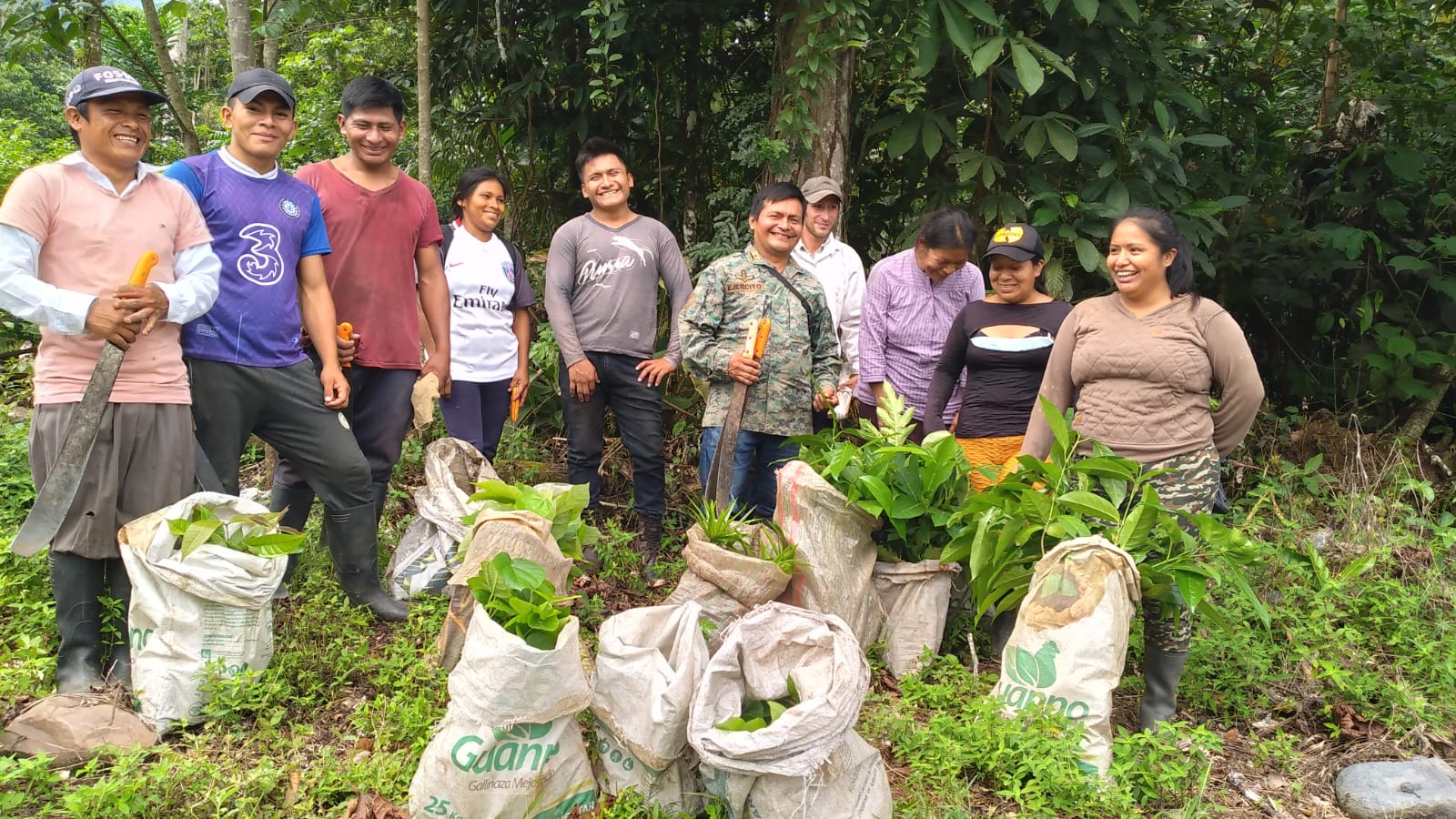
Andes Amazon Conservancy (AAC), and their new sister nonprofit organization Biocorredores Amazónicos, seek to maintain critical connectivity, or “eco-cultural corridors” among the landscapes between the Andes Mountains and the Amazon basin by centering Indigenous-led conservation in Ecuador and innovative land-use planning. AAC currently engages with 75 Indigenous communities.
One of AAC’s flagship programs, the Edible Forest Initiative, contributes to AAC’s overall goal of creating a 175-mile-long corridor and protecting 6 million acres of land.
According to Executive Director Rebecca Allen, “Communities participating in the Edible Forest Initiative are planting 20,000 culturally relevant native fruit and nut trees over 300 acres of carefully chosen land.”
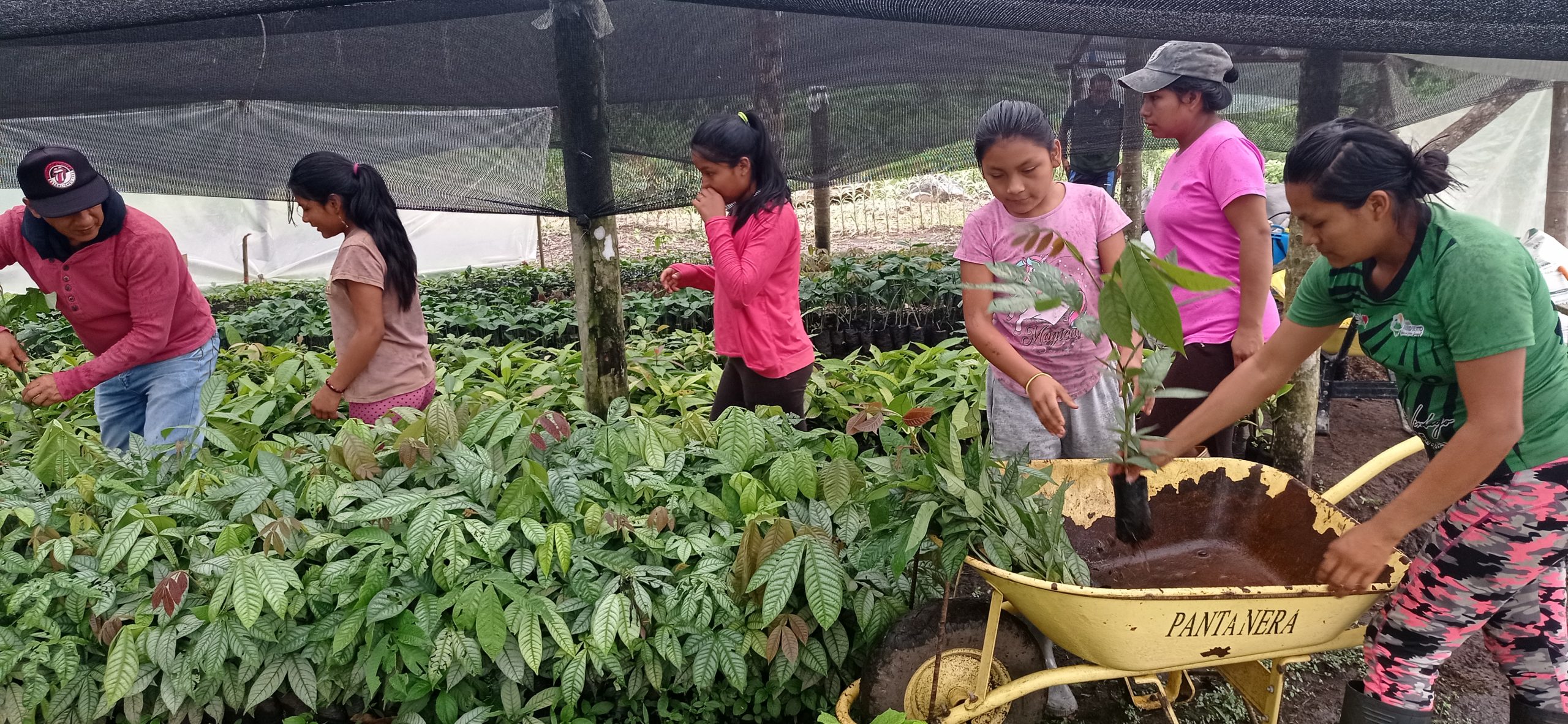
When these trees reach maturity, in an anticipated 5-years’ time, they will not only connect vast swaths of rainforest, but cash crops will also provide an essential foundation for local economies, as well as food security. This is what AAC refers to as “food sovereignty”: a reduced reliance on extractive industries that enables local, sustainable, and self-defined food systems.
The Edible Forest Initiative program is an example of how economic empowerment and food sovereignty are not diametrically opposed to ecosystem and climate resilience. Not only do trees sequester carbon and retain water, but the nurseries are strategically situated in areas that need immediate restoration and are critical for safeguarding biodiversity.
Tree roots along deforested streams and riverbanks provide soil stability, preventing erosion and runoff, and can help address those challenges. According to Rebecca, “With the guidance of conservation land-use planning, Indigenous communities make the deliberate choice to prohibit human development in these riparian areas, thus contributing to the preservation of [ecosystem] quality for both present and future generations.”
Sustainable Landscape Management in Bosque Modelo Risaralda supported by Terraso
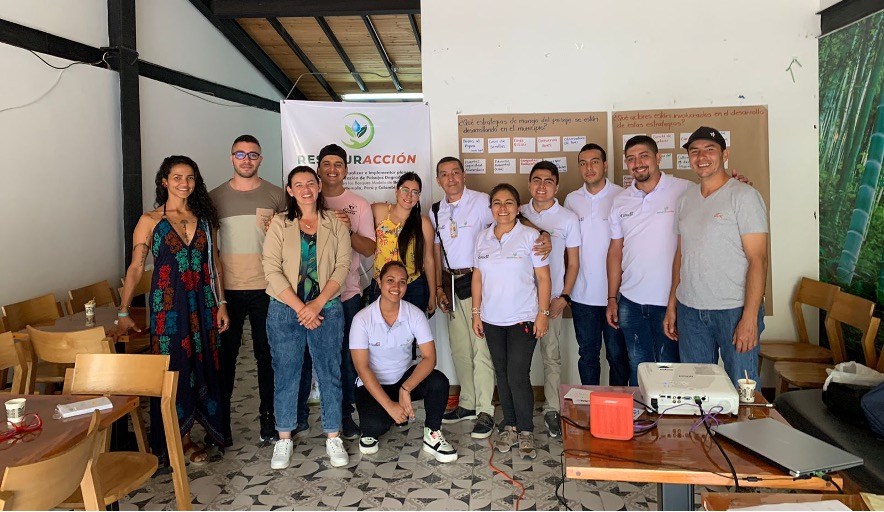
*Please note: statements were provided in Spanish, and John Rodriguez’ original quotes can be found at the bottom of the article.
Terraso, a social enterprise from Tech Matters, seeks to put agency back in the hands of people who play a significant role in shaping their local landscapes, such as pastoralists, smallholder farmers or Indigenous people. Though these local landscape leaders can play a crucial role in managing and preserving their land, they often lack the technical instruments to bring together key collaborators, build a shared understanding, or communicate to potential donors. Terraso provides tools for participating landscapes to map and manager their territories, while providing a platform to visually tell stories about their work.
I recently had the opportunity to hear some of these stories directly from one of Terraso’s partners, the Bosque Modelo Risaralda Landscape Partnership (BMR), in Colombia, who have spent the last 25 years leading a participatory landscape management model. Covering an area of 359,000 hectares, the alliance in Risaralda unifies research universities, community organizations, governmental institutions, and donors to promote biodiversity and strengthen livelihoods through sustainable production systems. It is this collaborative effort that, according to Bosque Modelo Risaralda Manager, John Rodriguez, “will provide our socio-ecosystems with resilience in the face of climate change.”1 John affirms their belief “that it is not possible to conserve biodiversity and ecosystem services without simultaneously promoting sustainable livelihoods.”2
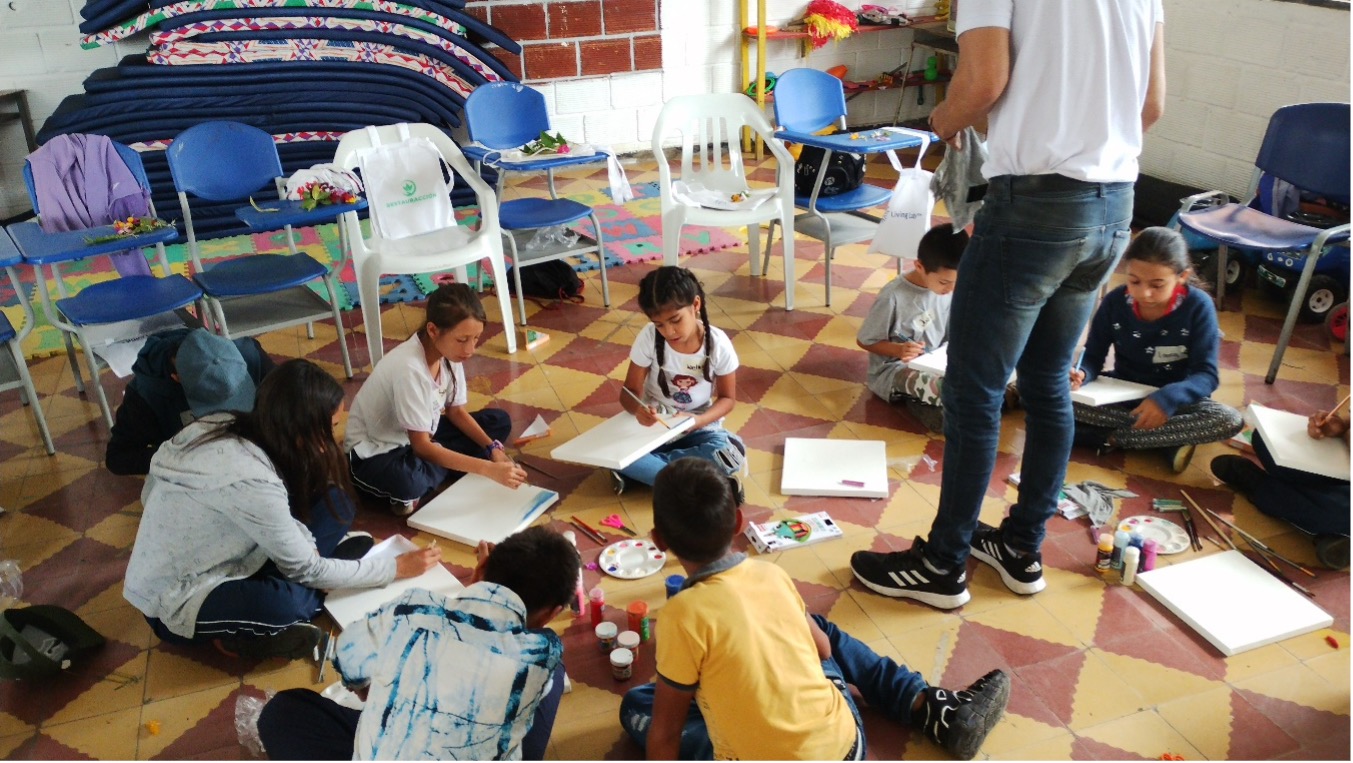
One specific example within BMR is the Cuchilla de San Juan coffee growers’ association (story map in Spanish), which promotes maintenance of coffee plantations through environmentally sustainable practices, such as utilizing shade trees alongside coffee bushes. A small group of local producers have restored their plantations with native species, minimized use of agrochemicals, reduced water usage, and included young people in business planning. According to John, these types of “innovations in agricultural sectors can provide flexible finance systems furthering sustainable practices and healthy lives.”3
BMR is one of many examples of integrated landscape management practices within South America that are beginning to use Terraso’s services and platform to share their successful practices with other landscape leaders and attract potential donors. Terraso and the Cisco Foundation both believe that shifting high-quality tools, information, and investments to local leaders to increase their own capacity will lead to better environmental and economic outcomes for us all.
Rather than continuing an aged paradigm of “hands-off” conservation, these three Cisco Foundation partners working in and around the Amazon are prioritizing the integration of economic livelihoods and environmental preservation with community-designed, locally driven, and culturally appropriate programs.
Our partners showcase how stable environments, inclusive societies, and thriving economies can work together to promote resiliency in our changing climate.
Footnotes:
1 – “En el Bosque Modelo Risaralda creemos que este trabajo mancomunado por las sostenibilidad es importante porque es la manera de preparar nuestros socioecosistemas para ser resilientes a los cambios, especialmente el cambio climático y el cambio global.”
2 – “Creemos que no es posible conservar la biodiversidad y los servicios ecosistémicos si al mismo tiempo no garantizamos modos de vida sostenibles”
3 – “La innovación en los sectores productivos agrícolas, la preparación social para el cambio climático, las innovaciones financieras para modos de vida sostenibles”

Innovation seems to be a key factor for rain forest preservation together with economical and social development of forest communities.